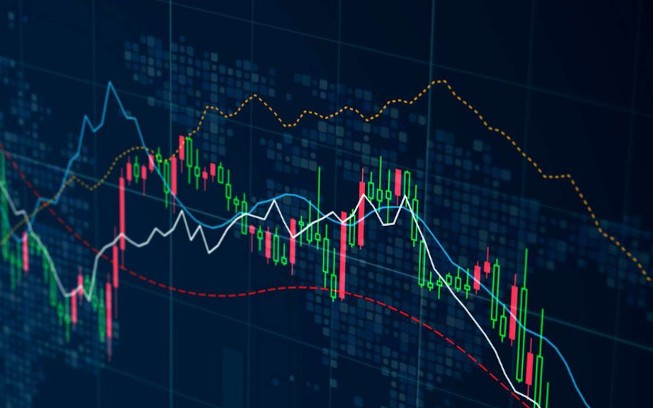
In the world of Forex trading, understanding the concept of margin is crucial for both beginner and experienced traders. Margin plays a significant role in trading strategies and risk management. If you’re looking to delve deeper into this essential aspect of Forex, visit what is margin in forex trading https://trading-connexion.com/ for more resources. This article will explore what margin is, how it works, its types, and its role in Forex trading.
What is Margin?
Margin in Forex trading refers to the amount of money a trader must deposit with their broker to open and maintain a leveraged position. Essentially, it acts as a good faith deposit that ensures you can cover potential losses in a trade. Margin is often expressed as a percentage of the full value of the position being opened. This allows traders to leverage their capital, meaning they can control larger positions than their initial deposit would typically allow.
How Margin Works in Forex Trading
When you engage in Forex trading, you don’t have to pay the entire value of a forex position upfront. Instead, you only need to deposit a small fraction of it, known as margin. The use of leverage enables traders to increase their potential returns, but it also amplifies the risks involved. Alternatively, it can lead to substantial losses if the market moves against your position.
Consider a simple example: If you’re trading a currency pair with a value of $100,000 and your broker offers a margin requirement of 1%, that means you only need to deposit $1,000 to open that position. However, if the trade goes against you by 1%, your entire margin could be lost.
Types of Margin in Forex
There are several types of margin that traders should be aware of. They include:
- Initial Margin: This is the amount required to open a new position. It acts as a deposit that secures your trade.
- Maintenance Margin: This is the minimum amount of equity you need to maintain your open positions. If your account equity falls below this level, you may receive a margin call.
- Free Margin: This refers to the amount of equity in your account that is not tied up in margin for your open positions. It can be used to open new trades.
- Margin Call: This occurs when your account equity falls below the maintenance margin requirement, prompting the broker to request additional funds to cover potential losses.

The Importance of Margin in Forex Trading
Understanding margin is vital for effective risk management in Forex trading. Here are some key reasons why margin matters:
- Leverage: Margin allows traders to use leverage effectively. This means you can control larger positions with a smaller amount of capital, potentially increasing profitability.
- Risk Management: Proper margin management helps traders limit their exposure to risk. By understanding how much margin is required and the amount of leverage used, traders can make informed decisions about their trades.
- Market Movements: Forex markets are known for their volatility. A small price movement can result in significant gains or losses. Understanding margin helps traders navigate these fluctuations more effectively.

How to Calculate Margin
The calculation of margin involves understanding the formula for margin requirements. The following formula can be used:
Margin Required = (Trade Size / Leverage)
For instance, if you’re trading a $100,000 position with 100:1 leverage, the margin required would be:
Margin Required = ($100,000 / 100) = $1,000
This means you need to deposit $1,000 to open this position. Understanding this calculation helps traders plan their trades more effectively.
Risks of Trading on Margin
While using margin can lead to higher profits, it also comes with increased risks:
- Increased Losses: Just as margin amplifies potential profits, it also increases potential losses. If the market moves against your position, losses can exceed your initial deposit.
- Margin Calls: If the equity in your account falls below the maintenance margin, you will receive a margin call from your broker, requiring you to deposit more funds or close positions.
- Emotional Stress: The pressure of trading on margin can lead to emotional decision-making, which can negatively impact trading outcomes.
Best Practices for Trading on Margin
To effectively manage the risks associated with trading on margin, consider the following best practices:
- Understand Your Broker’s Margin Policies: Each broker has different margin requirements and policies. Familiarize yourself with them before opening a trading account.
- Use Stop-Loss Orders: Implementing stop-loss orders can help limit potential losses and protect your capital while trading on margin.
- Keep Leverage Low: While higher leverage can amplify gains, it also increases risk. Use lower leverage to manage risk effectively.
- Monitor Your Trades Regularly: Keep an eye on your open positions to ensure that they align with your risk management strategy.
Conclusion
Margin is a fundamental concept in Forex trading that empowers traders to unlock their potential through leveraged trading. However, it is essential to approach margin trading with caution and to fully understand the risks involved. By following best practices, understanding types of margin, and diligently calculating margin requirements, traders can effectively utilize margin to enhance their trading strategies while mitigating potential losses. As you embark on your Forex trading journey, remember that knowledge and proper risk management are your greatest allies.
